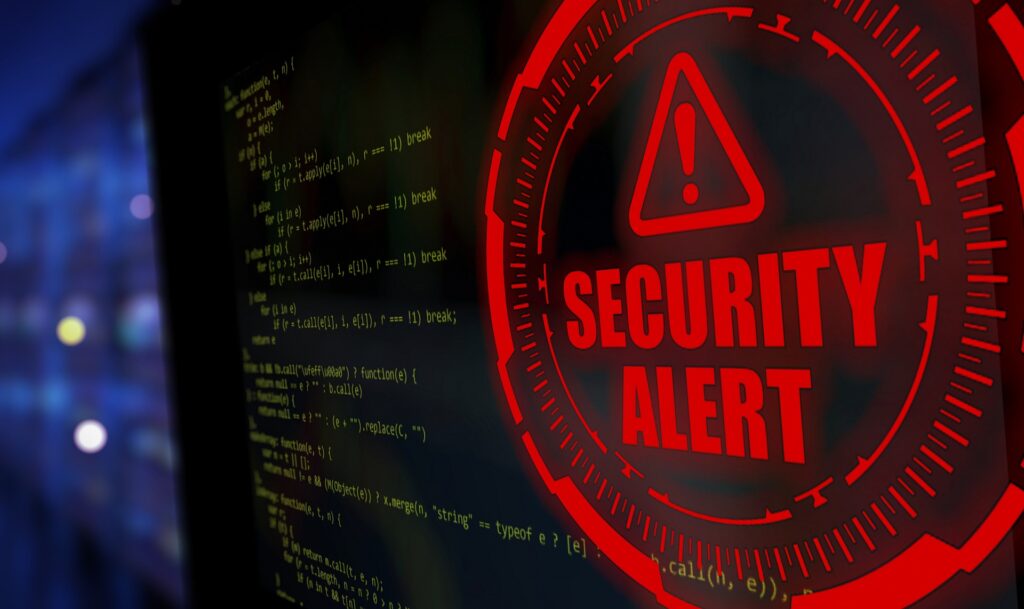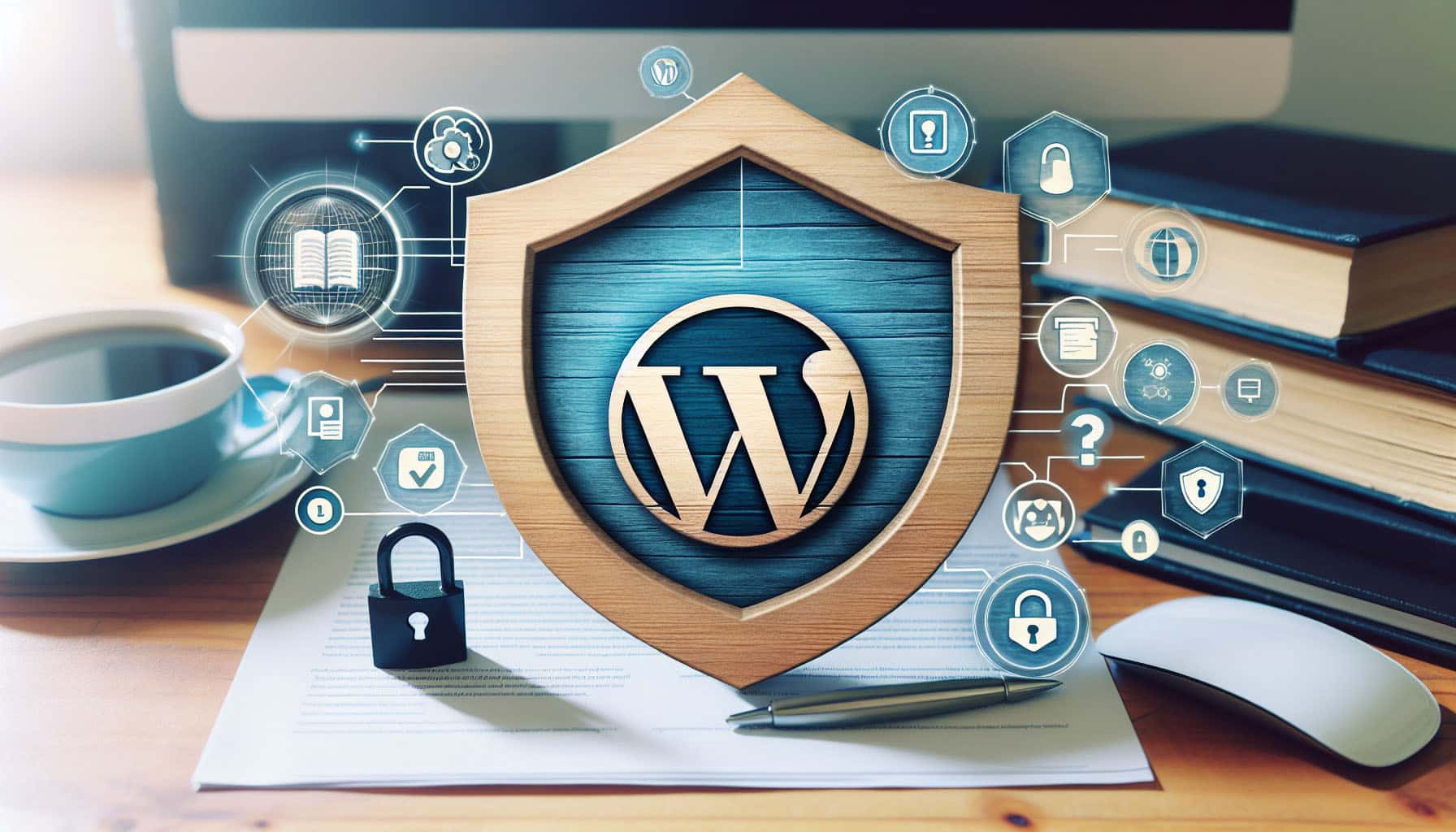Using strong passwords
The importance of strong passwords cannot be overstated. They are your first line of defense against unauthorized access and play a crucial role in securing your WordPress website. Nearly 30% of cyber attacks are enabled by the use of weak or stolen passwords. A strong password should be at least 12 characters long and include a combination of uppercase and lowercase letters, numbers, and special characters.
Tips for secure passwords
- Use a mix of letters, numbers, and special characters: This combination makes it difficult for hackers to crack your password.
- Avoid easily guessed information: Avoid data such as your name, birthday, or common words.
- Regularly change your passwords: This minimizes the risk of unauthorized access and increases the chance of detecting security breaches early.
Use a password manager
A password manager is an effective solution for managing your passwords. Tools like 1Password, LastPass, and Dashlane generate complex passwords that are difficult to crack and securely store them. You only need to remember one master password. Some managers offer additional security features like two-factor authentication, providing an extra layer of protection.
By implementing these methods, you ensure that your passwords are strong and your online presence remains secure.
Performing regular updates
To ensure the security of your WordPress website, it is essential to perform regular updates. These updates close known security vulnerabilities and ensure that your website stays up to date. Here are important steps you should follow:
Updating the WordPress Core
Regularly update the WordPress Core to benefit from the latest security measures and improvements. Since WordPress version 3.7, minor updates are automatically performed. For major updates, add the line define(‘WP_AUTO_UPDATE_CORE’, true); to your wp-config.php file to enable automatic installation.
Keeping Plugins and Themes Up to Date
Before updating the WordPress Core, ensure your plugins and themes are updated first. This ensures compatibility with the latest WordPress version and prevents conflicts. Use the “Updates” dashboard menu to perform all available updates for plugins and themes.
Enabling Automatic Updates
To simplify update management and keep your website secure, enable automatic updates. Since WordPress 5.5, you can configure this directly in the dashboard for plugins and themes. Select your desired extensions and activate automatic updates via the “Automatic Updates” dropdown menu.
By following these steps, you ensure that your WordPress website is secure and minimize potential security risks.

Restricting Access to the Admin Area
To enhance the security of your WordPress admin area, carefully control access with these three effective measures:
Limit Login Attempts
Restrict the number of login attempts to prevent brute-force attacks. Plugins like Limit Login Attempts or Loginizer track the number of failed login attempts and temporarily block corresponding IP addresses. These plugins also offer advanced features like Google reCAPTCHA to distinguish between real users and bots.
Rename Admin Area
Change the default URL of your WordPress admin login. Standard URLs like /wp-admin are easy for hackers to guess. Use plugins such as WPS Hide Login to alter the URL and make it less conspicuous. Avoid generic names like “login” or “admin,” which are easy to guess.
Use Two-Factor Authentication (2FA)
Implement two-factor authentication for an additional layer of security. This requires a second verification step, such as a code sent to your mobile device, in addition to the password. Plugins like Two Factor or WordFence provide this functionality and significantly enhance security by complicating access even with a known password.
By implementing these measures, you can effectively secure the admin area of your WordPress website and minimize the risk of unauthorized access.
Choosing a Secure Hosting Environment
Selecting a secure hosting environment is crucial for the integrity and security of your WordPress website. A good hosting provider should offer regular server updates, security monitoring, and reliable support in case of a security incident. It’s important to research your provider’s security practices and review feedback from other users.
Benefits of Managed WordPress Hosting
Managed WordPress Hosting offers numerous advantages tailored specifically to the needs of WordPress users. It controls and manages WordPress, the theme, and plugins, ensuring your system is always up to date. Additionally, many providers offer automatic and manual backups to quickly restore a clean backup in case of damage. Such hosting packages can protect your website from common security risks by providing advanced security measures such as firewalls, malware scans, and more.
Server-Based Security Measures
A reliable hosting provider should offer comprehensive server-based security measures. These include regular malware checks, web application firewalls, and the implementation of security updates to close major security vulnerabilities. Ensure your provider ensures adequate data security, including the use of encryption and firewalls to protect data from unauthorized access.
Perform Regular Backups
Regularly performing backups is a fundamental security measure. Many managed hosting providers automatically create daily backups of your website, typically stored for seven to 30 days depending on the plan. These backups are often securely stored not only on the server but also in external cloud storage, allowing quick access in emergencies. It is advisable to also perform manual backups for an additional layer of security.
By taking these measures, you can establish a solid foundation for the security of your WordPress website.
Webdevelopment
Activating SSL Encryption
Enabling SSL encryption is a crucial step in enhancing the security of your WordPress website. SSL (Secure Sockets Layer) protects the data transmission between your visitors and your site by establishing an encrypted connection. This prevents sensitive information such as passwords or credit card details from being intercepted.
Benefits of HTTPS
By transitioning to HTTPS, the protocol that SSL uses, you not only improve your website’s security but also its trustworthiness and speed. Here are some benefits:
- Enhanced Security: HTTPS encrypts the transmitted data, ensuring the security of information exchanged on your website.
- Improved Google Ranking: Since 2014, HTTPS has been a ranking factor for Google, potentially leading to higher rankings for HTTPS sites.
- Building Visitor Trust: A security padlock in the address bar signals to visitors that their data is secure.
Installing an SSL Certificate
The SSL certificate is fundamental to enabling HTTPS. Many hosting providers offer simple ways to activate SSL for free via Let’s Encrypt or provide their own certificates. Installation is usually straightforward through the hosting dashboard with just a few clicks. After activating the certificate, follow these steps:
- Activate in Hosting Dashboard: Select your SSL certificate and activate it for your domain.
- Verify Installation: Ensure the certificate is correctly installed by accessing your website with “https://” before the URL.
Enforcing HTTPS
After installing the SSL certificate, it’s important to ensure that all versions of your website redirect to the secure HTTPS version. You can achieve this in several ways:
- Set HTTPS redirection in the hosting dashboard: Many hosts offer an option to automatically redirect all requests to HTTPS.
- Modify .htaccess file: Add a redirection rule in your .htaccess file to redirect all HTTP requests to HTTPS.
- Adjust in WordPress: Change the URLs of your website from “http” to “https” in the WordPress settings.
By implementing these measures, you ensure that your WordPress website is protected by SSL, significantly enhancing the security of your data and that of your users.
Using a Security Plugin
To maximize the security of your WordPress website, using a specialized security plugin is essential. These plugins offer a variety of features designed to protect your site from various threats.
Recommended Security Plugins
Some of the recommended security plugins include iThemes Security, which is particularly user-friendly for beginners, and Wordfence Security, known for its comprehensive protection measures. Sucuri Security is also an excellent choice that not only provides protection but also assists in resolving security issues.
Key features
These plugins offer a range of protective measures:
- Active Monitoring and Malware Scans: They detect threats in real-time and regularly scan your website for malware.
- Firewalls and Protection Against Brute Force Attacks: They block unauthorized access attempts and protect against password hacking.
- Security Hardening and Post-Hack Actions: In the event of a security incident, these features help secure and restore your website quickly.
Configuration and Setup
Setting up these plugins is typically straightforward. After installation, you can make important settings through simple menu navigation. For example, the iThemes Security plugin allows for easy configuration through pre-built security settings that can be selected directly from the menu.
By implementing a robust security plugin, you establish an important line of defense for your WordPress website, allowing you to focus on expanding your online presence without constantly worrying about security threats.
Checking File and Folder Permissions
Checking and correctly setting file and folder permissions is a crucial step in securing your WordPress website. Here are specific measures you should take:
Setting Correct Permissions
Generally, files should be set to 644 and folders to 755. This ensures that your files are readable and secure without granting unnecessary write permissions. For critical files like wp-config.php or .htaccess, you can further restrict permissions to enhance security. A setting of 444 is often recommended here to prevent any changes by unauthorized users.
Protecting Critical Files
It’s important to restrict access to sensitive files. By adding specific rules in the .htaccess file, you can block access to important configuration files such as wp-config.php and .htaccess itself. This prevents hackers from manipulating or accessing these files.
Performing Regular Checks
Regularly check the permissions of your files and folders to ensure that no unwanted changes have been made. Use tools like FileZilla to access your server via FTP and verify permissions. This helps identify and close potential security vulnerabilities early.
By consistently applying these practices, you ensure that your WordPress installation is protected against unauthorized access, keeping your data secure.
Conclusion
In summary, the security and integrity of a WordPress website can be significantly enhanced through the implementation of targeted measures. From using strong passwords and performing regular updates for plugins and themes to restricting access to the admin area, choosing a secure hosting environment, and activating SSL encryption – these steps together form a robust foundation for protecting your online presence. Furthermore, the use of specialized security plugins and proper configuration of file and directory permissions are essential in defending against security threats.
Implementing these measures not only ensures that your website is secure but also enhances trust in your brand among visitors. It is essential to practice proactive security management, conduct regular audits, and remain open to adapting to new security standards. This constant vigilance and adaptation are key to long-term success and security of your WordPress website in an ever-evolving digital landscape.
FAQs
- How can I make my WordPress website more secure? To secure your WordPress website, use only trusted themes and plugins, regularly update WordPress itself and unnecessary plugins and themes. It’s also important to create regular backups, use secure passwords, and secure the admin area by changing the login URL.
- Are websites based on WordPress generally safe? WordPress is generally a secure platform, but due to its popularity, it is a frequent target of hacker attacks. Therefore, it is crucial to continually improve security and promptly close security vulnerabilities.
- What is the most important measure to make a website secure? The most important measure to secure a website is encrypting data transmission with an SSL certificate. SSL, short for Secure Socket Layer, is a protocol that ensures secure data transmission over the Internet.








